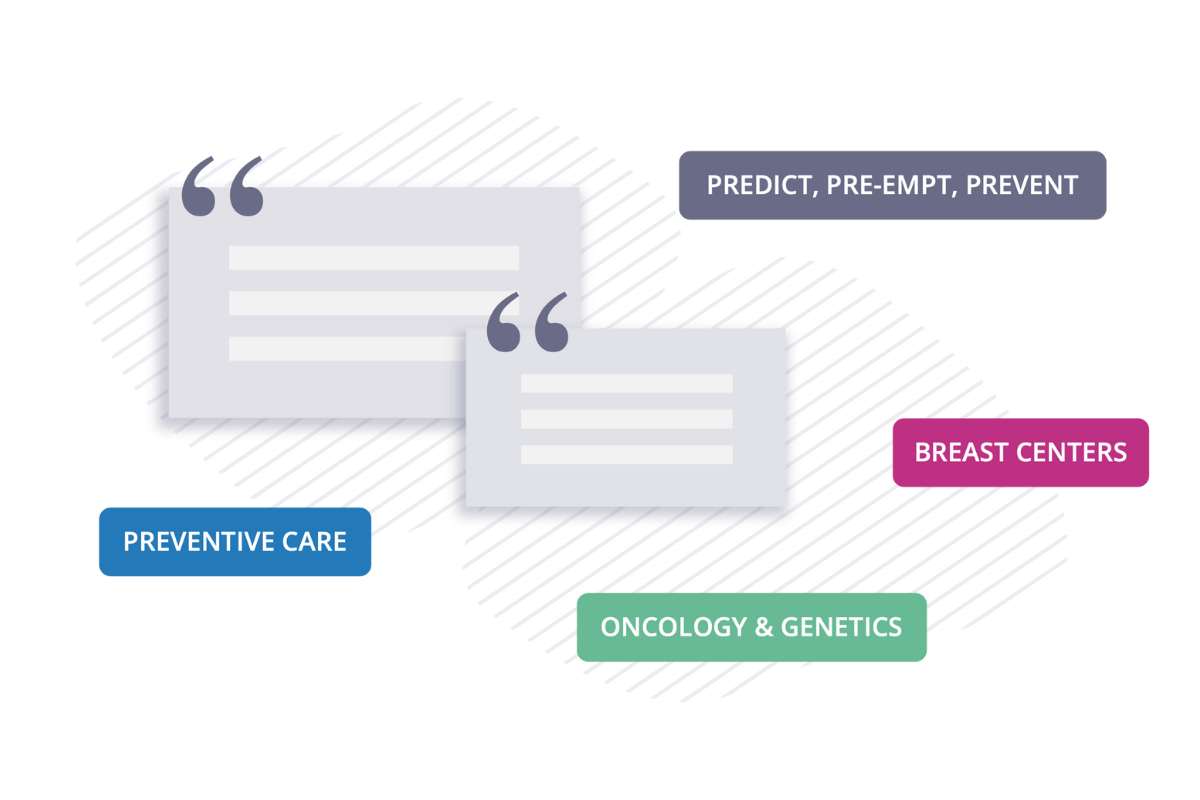Beyond October: How to Scale Breast Center Services to High-Risk Patients All Year Long
When the pink's packed away, and screening isn't top of mind come November, many of the women who have flocked to their local breast centers to get...

When the pink's packed away, and screening isn't top of mind come November, many of the women who have flocked to their local breast centers to get...
High-risk breast programs increase rates of early cancer detection, improving patient outcomes, lowering the cost of care and engaging patients in...
How NCCN Guidelines and the Tyrer-Cuzick Lifetime Model differ and why programs are missing patients.
The average breast program provides one-size-fits-all preventive care that fails to meet the needs of the 1 in 10 women, like Jill Martin, with the...
Breast center providers including mammography techs, nurses, and clinicians, as well as the patients they serve deserve a tool that helps them follow...
Health systems are introducing high-risk breast programs to help high-risk patients access the preventive care they need to manage risk of cancer.
CancerIQ joined leading experts in breast health at the National Consortium of Breast Centers’ 31st Annual Interdisciplinary Breast Center...
Millions of women with a family history of breast or ovarian cancer have yet to undergo genetic testing despite lifetime risk being 7x higher than...
Health systems with top-tier high-risk breast program increase early detection, prevent costly late-stage cancer care, and improve survival rates.
At HIMSS21, AHEAD Medical Director Candace Westgate, DO, explained how technology helped Adventist Health bring genomics to patients systemwide.